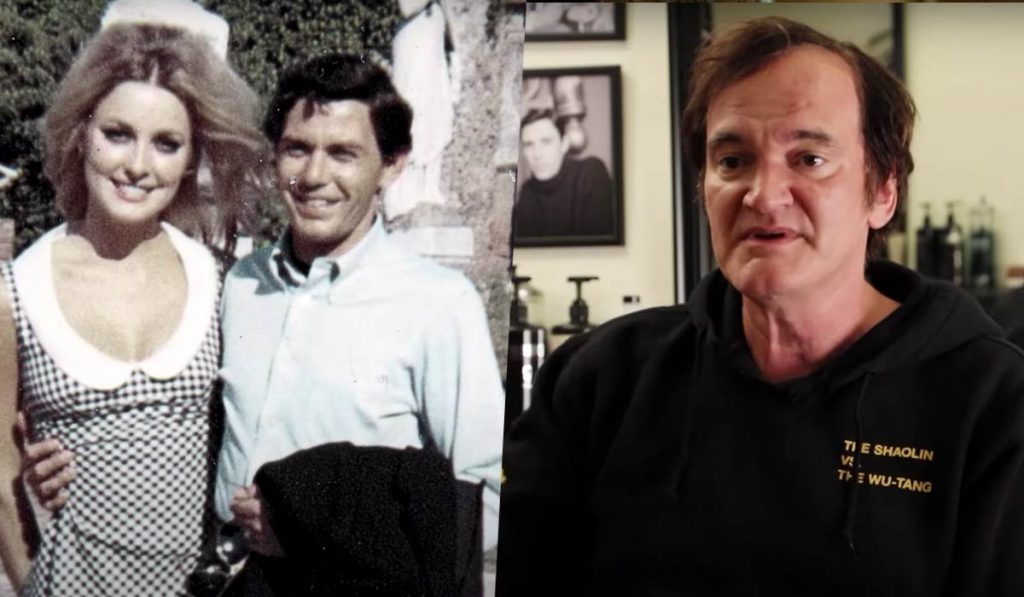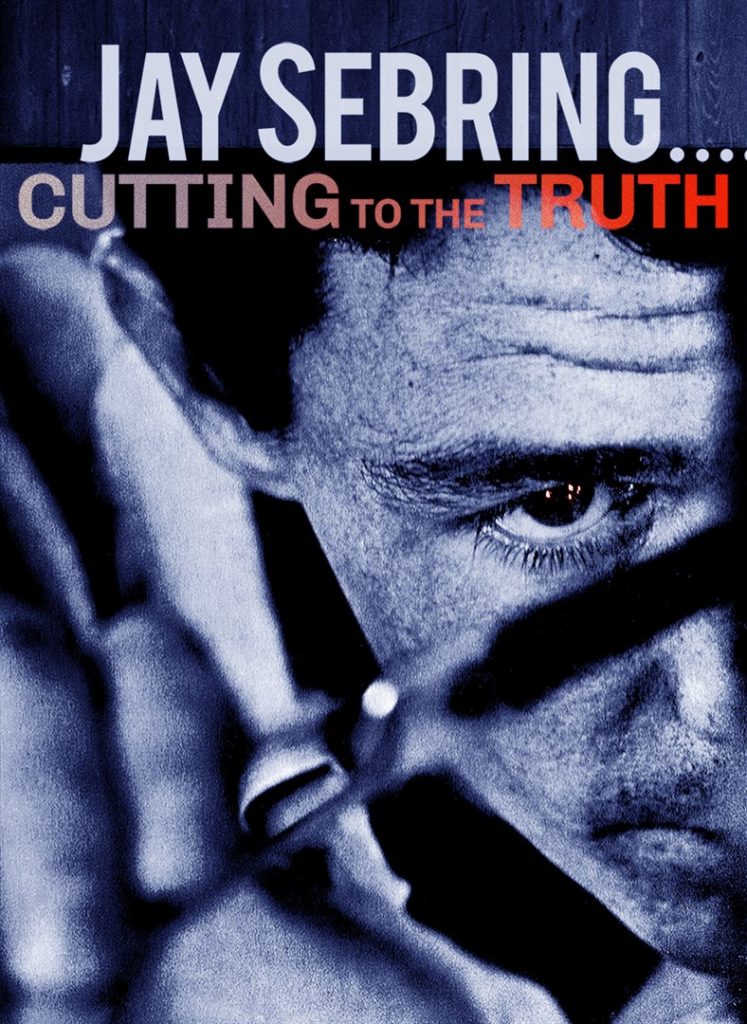Anthony DiMaria’s “Jay Sebring: Cutting to the Truth” is a documentary about Jay Sebring, the murdered international hairstylist on the cusp of fame and fortune. Particularly, this piece exposes the rampant bad journalism surrounding Jay Sebring’s death, by doing it with personal interviews, court transcripts, medical evidence, and the mass media. Basically, this documentary proves there are always two sides to a story, especially when it comes to the Charles Manson murders.
First and foremost, the documentary mentions Jay Sebring, or for that matter any of the other Manson victims, did nothing wrong to receive such reproach on their names. In fact, Quinton Tarantino, a famous movie producer, had something interesting to say about the mass media in regards to heaping dirt on the Manson victims’ names: “Then when the Manson Family are discovered, all the magazines and all the journalists who had practically vilified victims for a whole year, just turned around, never apologized for anything they did. Never said they were wrong. Never went out of their way to return the victims to their proper place and their proper status. And just enjoyed the monkey show.”
Quinton Tarantino had more truth to say about the media’s role in Jay Sebring’s death. “Salacious magazine articles and newspapers. And by the way, the most reputable magazines and the most reputable newspapers.” The media played up the Manson murders to sell magazines even though they were lies; moreover, people judged Jay Sebring, as well as the other victims, via these magazine stories.
Additionally, this documentary pointed out people knew more about Charlie Manson than about Jay Sebring. As one watches the beginning, the narrator tells us, saying: “It’s endless. Even today, it’s the Charlie and family show. Same narrative from day one.” The narrator further explains, saying: “Jay’s murderers became rock star serial killers.” The fact that people know more about a serial killer than his actual victims is a sad commentary on our society.
Not only that, this documentary points out that the mass media perpetrated wild stories about Jay Sebring. The narrator reveals some major news headlines of the day like “Weird Homicide” and “Killed at Weirdo Orgy.”
Another thing the documentary exposes is the difference between bad journalist accounts versus the actual medical autopsies. Journalists said murder victims were on drugs. Also, journalists said Sharon Tate lost a left breast, because she was sexually mutilated. Furthermore, journalists said Jay Sebring had his genitals cut off. However, none of the accounts were true, since actual medical autopsies showed none of these things happened to the murdered victims.
What is really strange, though, is bad journalists actually got away with bad journalism in reputable magazines. For example, stories in Life magazine contained many errors about how victims died. Not only that, Time magazine published many false statements about the murders in “The Night of Horror” article which had no published author on August 29, 1969. A little bit of fact checking could of went a long way in the Manson murder news stories.
Too bad Jay Sebring wasn’t alive to hire a lawyer. Lots of these magazines committed torts. The magazines published lies about him, and a tort lawyer could of successfully sued these magazines. If Jay had lived, you can bet things would of been different.
Helter Skelter, an actual book written by prosecuting DA Vincent Bugliosi of the Charles Manson murders, had many errors and cast reproach on Jay Sebring. The book said many things about Jay, which weren’t true. The documentary produces interviews of those who knew Jay and remarked Helter Skelter, a best seller, was bad journalism.
The film also has interviews regarding some of the most misleading statements in the media of the day. Various statements said: “[Jay] had a black belt in karate. Kept guns in his drawer. Kept an assortment of whips hand in his purple and black bedroom.” Statements and gossip were discussed by interviewees in this documentary.

The documentary gets into other things happening in Jay Sebring’s life. One was he produced his own instructional hairstyling films. Interviewees said in the doc, “Founder of men’s hairstyling.”
Here’s a little known fact: Jay Sebring battled the union. In particular, it was the barbers’ union. The barbers’ union wanted to shutdown Jay’s hairstyling salon. But Jay won.
That being said, Jay was a member of an international guild.
“I am a member of the International Hair Designers Guild that has been set up to protect the new breed of hair designers for men and make sure that credit is given where credit is due,” explains Jay Sebring.
While cutting hair and taking care of business, Jay Sebring, too, found time for acting. He appeared in television series like Batman and The Virginian. As well, he appeared in movies like Synanon. Jay Sebring was an up and coming actor.
After Jay’s death, in bad taste, television networks made jokes about Jay Sebring’s death. Jay’s nephew explains, saying: “Jay’s life and death were a joke on my favorite tv show.” Jay’s nephew was referring to a skit about Jay Sebring on NBC’s Saturday Night Live.
Jay Sebring, like other Hollywood stars, started a franchise. Jay’s sister, Margaret Kummer, revealed Jay Sebring’s plans to start a hairstyling franchise, saying: “Jay was on the verge of opening schools. And certified shops all over the United States.” Much like other stars of the era, Jay Sebring, Bruce Lee, Chuck Norris, and Ed Parker were starting schools and really doing it the American way.
Not only this, the doc gets into Jay Sebring’s star funeral. Famous stars like Steve McQueen, Robert Wagner, Bruce Lee, Paul Newman, Dennis Hooper, and Quincey Jones attended to name a few.
As the widow of Bruce Lee, Linda Caldwell, explains, Jay Sebring and Bruce Lee were friends. Linda tells us Bruce Lee trained Jay Sebring. And Jay would cut Bruce’s hair, while introducing Bruce Lee to contacts. These guys were buddies.
Many famous people had something to say about Jay Sebring. Vital Sassoon, international hairstylist, said this about Jay: “America needs to know that they had a star. He was changing things.” Quincey Jones, record producer, also said this about Jay: “Jay was part of the transitional sensibility in America.” As well, Robert Wagner, movie star, added this about Jay: “You wonder where he would be today.”
Briefly, this documentary was really well done. It got into actual personal interviews and exposed the lies surrounding Jay Sebring’s murder. As well, it got into medical records, which exposed the bad journalism surrounding Jay’s death. The documentary is a really well researched piece of work, so check it out for yourself, to come to your own conclusions.
